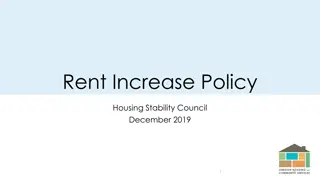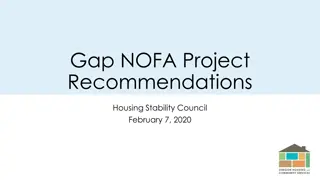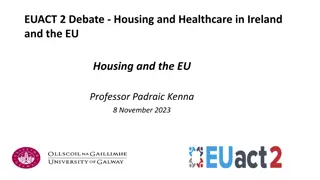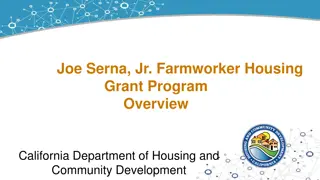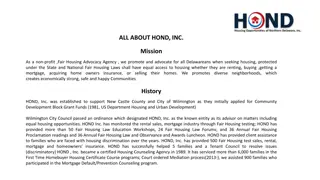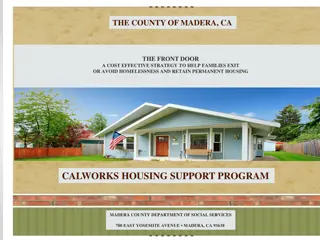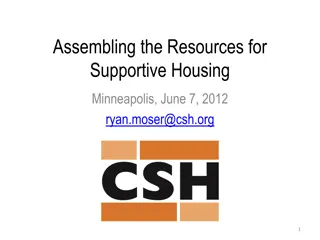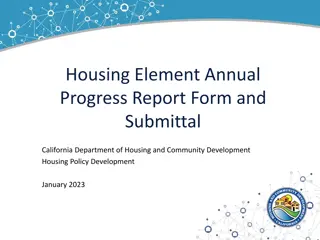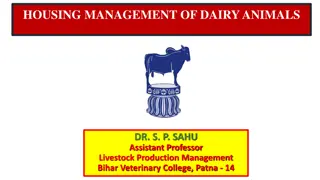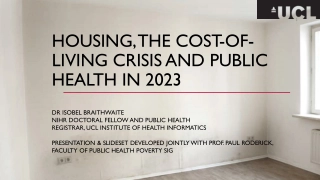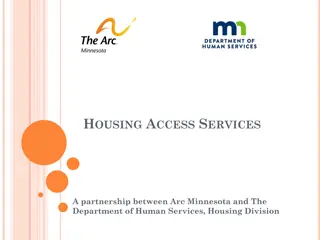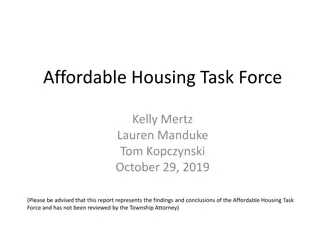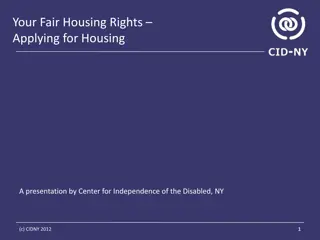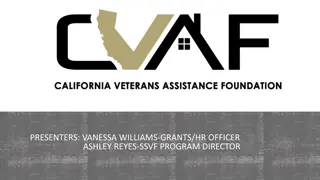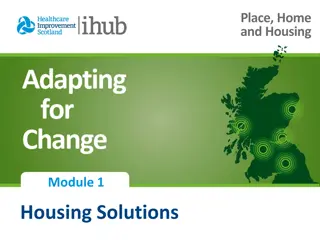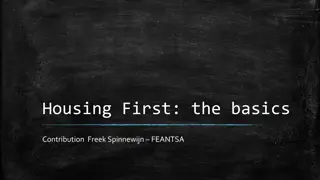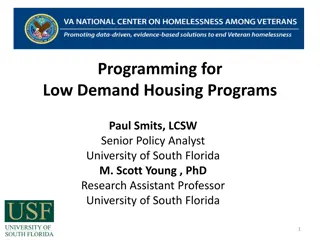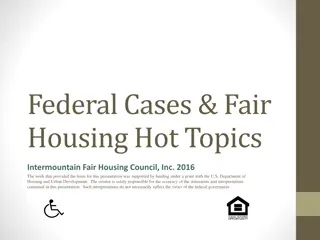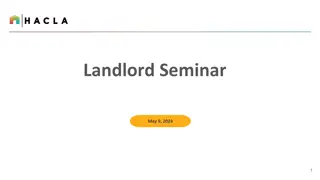Understanding the Interconnectedness of Housing Stability and Food Security
Explore the integral relationship between stable housing, food security, poverty, and income. Learn about the definition and characteristics of food security, causes and consequences of food insecurity, and strategies to address rural hunger. Gain insights into how promoting stability and resilience in housing and food security is crucial for the well-being of individuals.
Uploaded on Sep 24, 2024 | 0 Views
Download Presentation

Please find below an Image/Link to download the presentation.
The content on the website is provided AS IS for your information and personal use only. It may not be sold, licensed, or shared on other websites without obtaining consent from the author. Download presentation by click this link. If you encounter any issues during the download, it is possible that the publisher has removed the file from their server.
E N D
Presentation Transcript
9.22.16 9.22.16
ITS ALL CONNECTED! Housing Stability Housing Stability and Food Security well-being of all persons The lack of stable housing and adequate, healthy food is integrally related to poverty and inherently connected with income The goals of Ending Homelessness and Food Security are the same promoting stability and resiliency - with similar principles Food Security are critical to the health and
DEFINITION: FOOD SECURITY Access by all household members at all times to enough food for an active, healthy life. Food security includes as a minimum: 1. the ready availability of nutritionally adequate and safe food 2. an assured ability to acquire acceptable foods in socially comfortable ways (this is, without resorting to emergency food supplies, scavenging, stealing, or other coping strategies)
CHARACTERISTICS OF FOOD SECURITY Availability of foods at a reasonable cost Ready access to grocery stores and other food sources Enough personal income to purchase adequate food to meet nutritional needs for all household members Freedom to choose acceptable foods Personal confidence in the safety and quantity of food available Easy access to good information about nutrition Reduced reliance on emergency food pantries
CAUSES OF FOOD INSECURITY Food Deserts / Lack of Sustainable Food Sources Lack of Income Sources High housing costs Health care costs
CONSEQUENCES OF FOOD INSECURITY H E A L T H H E A L T H B E H A V I O R A L B E H A V I O R A L Less physically active/less energy/obesity Difficulty concentrating Nervousness Low birth weight babies Irritability Weakens bones and muscles Diminish self-confidence and self-esteem Increases illness, depression, and lack of energy Iron deficiency anemia Impaired cognitive development Diabetes and hypertension
ADDRESSING RURAL HUNGER C H A R A C T E R I S T I C S A S C O M P A R E D W I T H S U B U R B A N O R U R B A N C H A R A C T E R I S T I C S A S C O M P A R E D W I T H S U B U R B A N O R U R B A N Unemployment and underemployment are greater; Education levels are lower; Work-support services, such as flexible and affordable child care and public transportation, are less available; The rural marketplace offers less access to communication and transportation networks
ADDRESSING RURAL HUNGER R U R A L H U N G E R F A C T S R U R A L H U N G E R F A C T S 17 percent of rural households are food insecure, or an estimated 3.3 million households 54 percent of counties with the highest rates of food insecurity (those in the top ten percent) are in rural areas. Rural areas also account for 62 percent of counties with the highest rates of child food insecurity. R U R A L P O V E R T Y F A C T S R U R A L P O V E R T Y F A C T S 8.2 million Americans (17%) living in rural areas live below the federal poverty line. 46 percent of people in families with a single female head of household living in rural areas were poor in 2014, as compared to 37 percent in the suburbs.
MOBILE FOOD PANTRY PROGRAM Quickly distribute fresh food to families in need: Fresh fruits and veggies Dairy milk, yogurt, etc. Bakery bread, baked goods 5,000 pound delivery serves 100 families; 10,000 pound delivery serves 200 families.
MOBILE FOOD PANTRY PROGRAM Results Example: Michigan Upper Peninsula Began Mobile Pantry program in 2014 bringing additional 300,000 pounds of food 2015 increased to 730,000 pounds 2016 through July provided 850,000, Total year estimate in 1.4M pounds! (28,000 weeks of food)
THE COMMUNITY FOOD CLUB OF GREATER GRAND RAPIDS New Model Developed by a Collaborative in Kent County (Seven Non-Profit organizations) Include the participation of consumers in planning and governing; surveys and focus groups Three Year Pilot to test the model (opened in January, 2015) Intentional effort to move beyond an emergency-only response (similar to ending homelessness)
CORE VALUES/PRINCIPLES Dignity Choice (self-select to participate; food items; times/hours, etc) Collaboration (combining strengths of different agencies + food /nutrition system) Membership model More normalized grocery store experience (not a pantry plus )
STATISTICS FROM THE FIRST YEAR 1406 Member Households (24% Senior households; 29% children) 70% of member households are at or below 100% of poverty 368,000 pounds of food in the first year Operations cost per member = $40.00
RESULTS IN THE FIRST YEAR OF OPERATION 22% of Members reporting healthier eating/diets 29% of Members reporting greater stability/ ability to meet other basic needs 33% of Members reporting a reduction in lack of food or skipping meals regularly Food Food Security, like housing stability, significantly Security, like housing stability, significantly improves people s health and well improves people s health and well- -being being
VISION MOVING FORWARD Greater involvement of consumers in securing and selecting food Emphasis on stability and resiliency Improve access to and incentives for healthy foods Promote system models focused on engagement, empowerment and integration We cannot succeed against hunger while ignoring poverty, because hunger is a physical manifestation of poverty. (2014 Hunger Report, Bread for the World Institute)
VIDEO https://www.youtube.com/watch?v=Yc8n2vFRCwc
Two Food Club Partners! Two Food Club Partners! Feeding America West Michigan Ken Estelle kene@feedingamericawestmichigan.org The Salvation Army Social Services Betty Zylstra bzylstra@usc.salvationarmy.org





